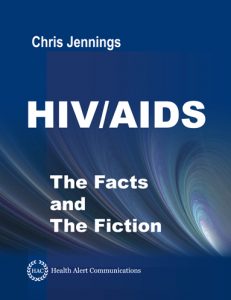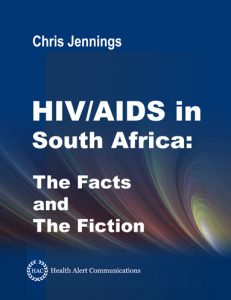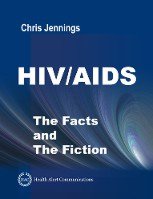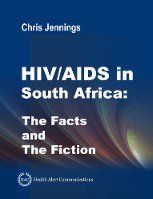As described in Part I of this article, few people realize that the familiar HIV/ AIDS global statistics are actually estimates. For example, UNAIDS estimated that the Republic of South Africa had 140,000 HIV / AIDS deaths in 1997 [1]. However, after tabulating all death certificates for 1997, the Republic of South Africa attributed only 6,635 deaths to HIV / AIDS [2].
One problem is that epidemiological models incorporate a misconception about the HIV incubation period, as described in Part I of this article [3 – 5]. A second problem of the computer models is their utilization of HIV seroprevalence data from sero-prevalence surveys.
Collectively, past and present, HIV assays have been invalid among select indigent, tropical populations (as utilized in their current diagnostic algorithms). Such populations marked by tuberculosis, influenza and pneumonia, intestinal infectious disease, and other adverse health conditions secondary to poverty, such as malnutrition and likely exposure to insanitary food and water.
Although these medical conditions themselves seem to have no direct statistical or antigenic correlation with HIV seropositivity, their presence presumably serves as markers for populations wherein immune systems are chronically inflamed, such that they react with the antigens and / or substrate of the diagnostic assays, yielding inordinate levels of false-positivity.
“One problem is that epidemiological models incorporate a misconception about the HIV incubation period…”
For example, in the Republic of South Africa, the HIV seroprevalence rate of first-time pregnant women averages 25% to 30% as evaluated in annual, one-off, sero-surveys (n ~ 30,000 per year) [6]. The RSA health authorities utilize this data to derive national HIV prevalence rate (17%), and the estimated number of PLWH (5.6 million), as of 2009 [6, 7].
The South African HIV / AIDS epidemic has been described as an “African-type” AIDS epidemic. “African-type” epidemics have several distinguishing features, namely [8]:
- the primary mode of HIV transmission is heterosexual,
- the number of HIV-infected women equals or exceeds the number of HIV-infected men,
- HIV / AIDS is said to be the primary harbinger of death, and
- HIV seroprevalence rates exceed all human plausibility of heterosexual HIV transmission.
In the Republic of South Africa alone, health care interventions founded on the fallacy of an “African-like” epidemic are currently administering antiretrovirals to an estimated 900,000 patients, the greater majority of whom lack HIV infection (in the Author’s opinion) [9]. These interventions have created revenue streams for some players in the pharmaceutical and diagnostic industries: income sources that could potentially collapse, based as they are on a conceptual house-of-cards.
Eventually, the revelation of these misconceptions may offer the greatest immediate opportunity to assay manufacturers, should any decide to focus on the diagnostic market. The lion’s share of the HIV assay market lies in blood screening at donations centers, wherein sensitivity is valued over specificity, as tests strive to reduce the window during which HIV antibodies reside below detectable limit(s). As such, the tendency over time has been the development of increasingly sensitive and less specific HIV assays [10].
“As such, the tendency over time has been the development of increasingly sensitive and less specific HIV assays.”
The decreasing lack of specificity may not adversely affect diagnosis within developed countries whose algorithms utilize the HIV assay in conjunction with the CDC surveillance definition (or facsimile) and biopsy-confirmed diagnoses of AIDS-defining conditions. It’s a different story in indigent settings wherein the clinics lack laboratory facilities for biopsy or blood counts, or wherein sentinel populations are subjected to one-time or periodic cohort-based, sero-surveys lacking any patient follow-up.
In the short-term, the development of an appropriate, new, diagnostic algorithm – with the HIV assay having different juxtaposition within the algorithm – might offer a significant competitive advantage in the third world diagnostic market. In the long-term, manufacturers will need to solve the specificity problems relevant to select indigent, tropical populations.
Vaccine manufacturers, given an effective product, might not be affected to a great extent since their product might retain value. Any successful antiretroviral vaccine technology might also have value in animal vaccine applications as, prior to the advent of HIV, the pathogenic retroviruses of primary research interest were those that infected food and farm animals of economic interest, namely, horses, goats, sheep, and cattle.
“…the development of an appropriate, new, diagnostic algorithm – with the HIV assay having different juxtaposition within the algorithm – might offer a significant competitive advantage in the third world diagnostic market.”
For those firms harboring investments in pharmaceutical R&D, the concern might be one of resource conservation and / or the re-evaluation of R&D priorities and prerogatives. Firms channeling one or more antiretroviral compounds through the pipeline in anticipation of an ever-expanding global market (estimates range up to 60 million infected people world wide [11]) are actually competing in a market only a fraction of the size.
For the animal market, the manufacturers of pharmaceutical agents would require an effective “silver bullet,” i.e., the pharmaceutical agent must eradicate the infection. Otherwise, the solution for animals infected with these retroviruses is destruction of the entire herd, as exemplified by hoof-and-mouth disease (a retroviral infection).
Other than HIV, the human market for antiretrovirals is rather limited. HIV was only the third known human retrovirus. The other two – human T-cell lymphotropic viruses I & II – are endemic to select populations in Japan and Africa. A fourth is HIV-2, but a discussion of “close relationship” between HIV-1 and HIV-2 in terms of disease characteristics and genetic homology is a topic for another discussion.
First Published in PharmaPhorum
- HIV / AIDS The Facts And The Fiction
- HIV / AIDS in South Africa: The Facts and The Fiction
References
[1] UNAIDS/WHO. Report on the global HIV/AIDS epidemic – June 1998. Geneva, Switzerland June 1998. [FREE Full Text]
[2] Mortality and causes of death in South Africa, 2003 and 2004 Findings from death notification. In: Africa SS, ed. Pretoria, South Africa: Statistics South Africa, 2006. [FREE Full Text]
[3] UNAIDS. Improved methods and assumptions for estimation of the HIV/AIDS epidemic and its impact: Recommendations of the UNAIDS Reference Group on Estimates, Modelling and Projections. AIDS. Jun 14 2002,16(9):W1-14. [PMID: 12045507]
[4] UNAIDS/UN. The Demographic Impact of HIV/AIDS: Report on the Technical Meeting New York, 10 November 1998: Population Division, Department of Economic and Social Affairs, United Nations Secretariat, February 1999 1999. ESA/P/WP.152* February 1999. [FREE Full Text]
[5] Brown T, Grassly NC, Garnett G, Stanecki K. Improving projections at the country level: the UNAIDS Estimation and Projection Package 2005. Sex Transm Infect. Jun 2006,82 Suppl 3:iii34-40. [PMID: 16735291]
[6] South African Antenatal reports 2001-2010 in Mid-year population estimates 2010. In: Africa SS, ed. Pretoria, South Africa, 2010. [FREE Full Text]
[7] UNAIDS. Global report: UNAIDS report on the global AIDS epidemic 2010. Geneva, Switzerland 2010. [FREE Full Text]
[8] Sher R. HIV infection in South Africa, 1982-1988–a review. S Afr Med J. Oct 7 1989,76(7):314-318. [PMID: 2799575]
[9] Mid-year population estimates 2010. In: Africa SS, ed. Pretoria, South Africa, 2010. [FREE Full Text]
[10] WHO. Joint United Nations Programme on HIV/AIDS (UNAIDS)-WHO. Revised recommendations for the selection and use of HIV antibody tests. Wkly Epidemiol Rec. Mar 21 1997,72(12):81-87. [PMID: 9238418]
[11] Skar H, Hedskog C, Albert J. HIV-1 evolution in relation to molecular epidemiology and antiretroviral resistance. Ann N Y Acad Sci. 2011 Aug,1230:108-18. [PMID: 21824168]
 [
[





Leave a Reply